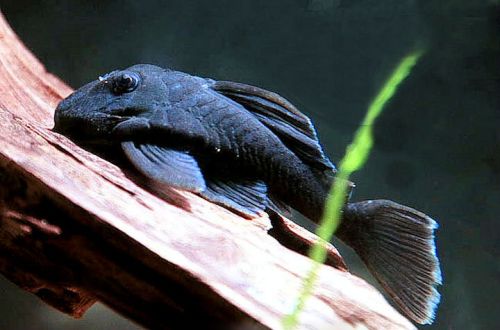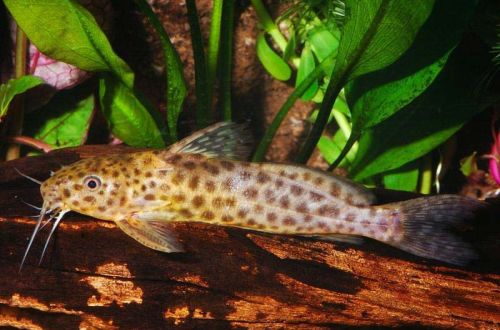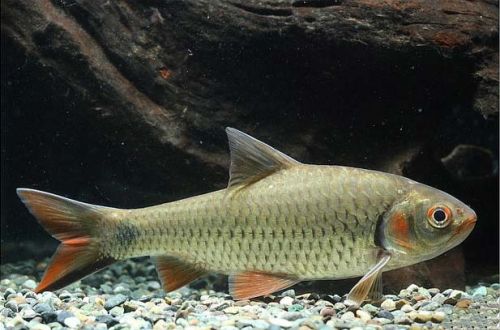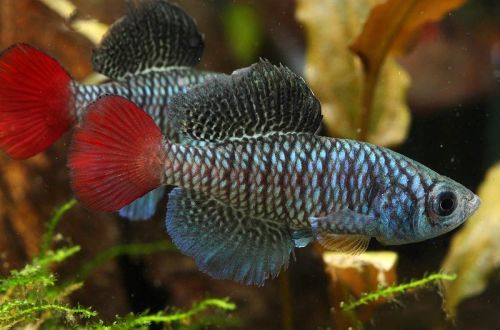
Blue Ancistrus
Baryancistrus blue, Blue Ancistrus or Heavy Ancistrus, scientific name Baryancistrus beggini, belongs to the Loricariidae family. Baryancistrus from the Greek βαρύς (Barys) means “heavy”, and indeed, outwardly, the catfish looks heavy, clumsy. For the original rich blue color, many aquarists around the world fell in love with, but not the simplest maintenance requirements limit interest in this species.

Contents
Habitat
It comes from a limited region of the lower reaches of the Guaviare River at the confluence with the Orinoco – the eastern part of Colombia near the border with Venezuela (South America). The habitat is characterized by rather turbid water, sandy substrate forming wide shallows and sandy islands. The river flows among the tropical forest, the coastal line is littered with fallen trees, the underwater part of which serves as a reliable shelter for many species of fish, including blue Baryantsistrus.
Brief information:
- The volume of the aquarium – from 100 liters.
- Temperature – 26-30°C
- Value pH — 5.5–7.5
- Water hardness – soft (1-10 dGH)
- Substrate type – sandy or fine gravel
- Lighting – any
- Brackish water – no
- Water movement – light or moderate
- The size of the fish is up to 10 cm.
- Nutrition – any drowning with herbal supplements
- Temperament – conditionally peaceful
- Content single or in a group
Description
Adults reach a length of about 8 cm. A characteristic feature of the species is its dark blue color. The head is large compared to the body, the eyes are on the top of the head and protrude above the head, allowing the catfish to see almost 360 °. Large pectoral and dorsal fins have thick pointed first rays resembling spikes.
Food
In nature, it feeds on periphyton – microorganisms and algae that inhabit the surface of snags, plants, substrate. The aquarium will accept high-quality dry sinking food with a high content of herbal supplements. Live or frozen food (bloodworm, mosquito larvae, etc.) can diversify the diet.
Due to the high metabolism, it may be necessary to feed 2 or more times a day. An additional source of food will be algae that naturally grows on any wooden surfaces, such as driftwood.
Maintenance and care, arrangement of the aquarium
The minimum tank size for one fish starts from 100 liters. The design uses a sand or gravel substrate, several natural wood snags, which will serve not only as a shelter, but also as a platform for the growth of algae. Underwater plants are optional and placed at the discretion of the aquarist and based on the needs of other fish.
Because Blue Ancistrus comes from flowing waters, the quality of the water must be very high. The soil should be regularly cleaned of organic waste. Install a productive filtration system and replace about half of the water in the aquarium with fresh water weekly. It is worth remembering that at high temperatures, and the catfish prefers up to 30 ° C, the level of dissolved oxygen drops greatly, so place additional spray stones.
Behavior and Compatibility
Relatively peaceful territorial fish. Due to its modest size, it cannot compete with larger species, but will compete with its relatives in a small aquarium. In a large tank and with a sufficient number of shelters, problems usually do not arise. It is advisable to keep together with fish that live in the water column or near the surface in order to avoid possible skirmishes.
Fish diseases
The main cause of most diseases is unsuitable living conditions and poor-quality food. If the first symptoms are detected, you should check the water parameters and the presence of high concentrations of hazardous substances (ammonia, nitrites, nitrates, etc.), if necessary, bring the indicators back to normal and only then proceed with treatment. Read more about symptoms and treatments in the Aquarium Fish Diseases section.





